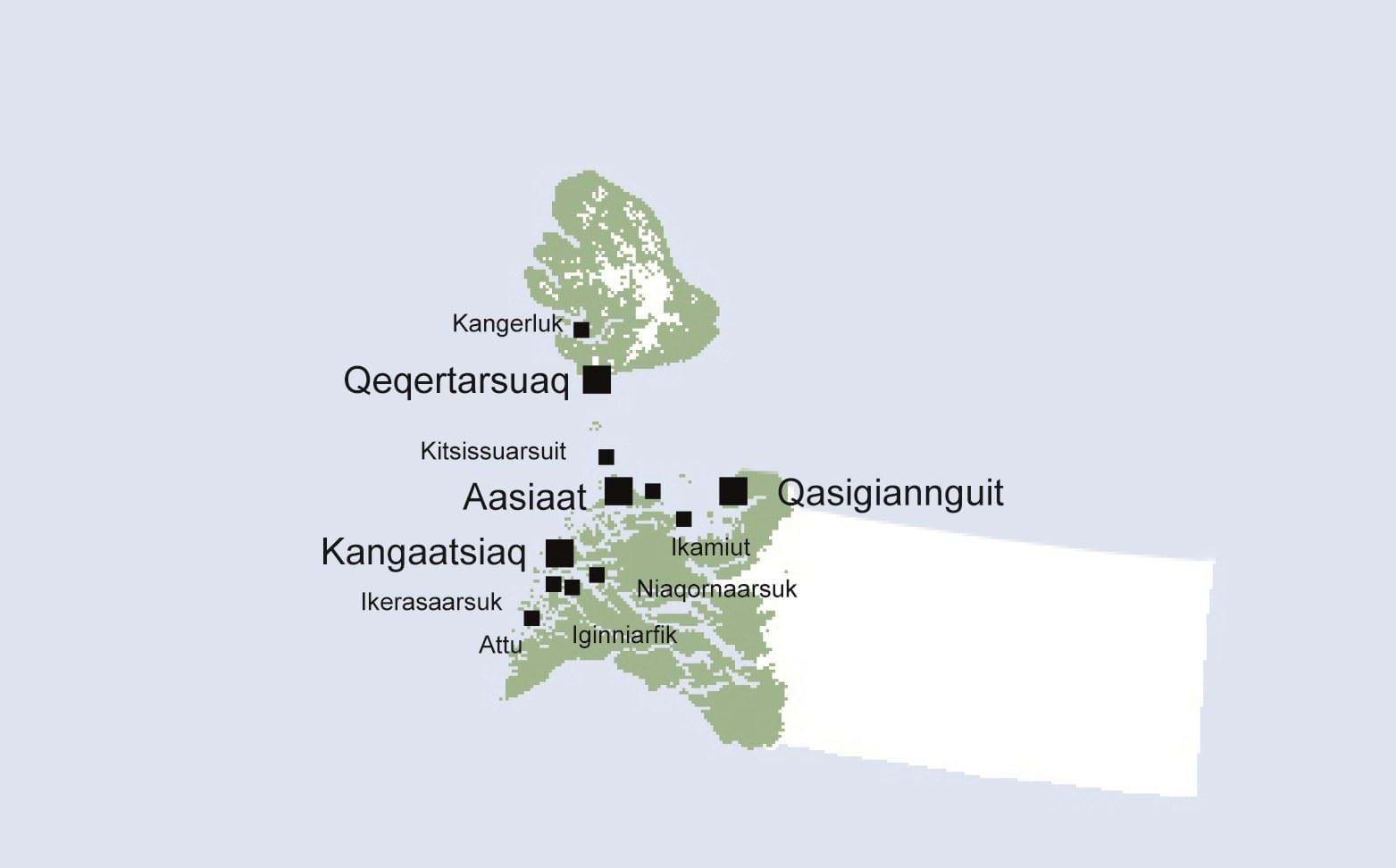Town pattern
The municipality's urban pattern includes 4 towns and 8 settlements, with a total of approx. 6,500 inhabitants. An urban pattern is set with Aasiaat as the main city and administrative center, as well as Kangaatsiaq, Qasigiannguit and Qeqertarsuaq as city centres for the settlements. Towns and settlements are mostly concentrated around the Disko Bay.
Aasiaat, located to the southwest of Disko Bay, is the municipality's largest town with about 3,100 inhabitants. While the main trades are fishing and the fishing industry, Aasiaat also has a growing tourism industry and plays an important role as an educational town. Aasiaat has the following nearby settlements: Akunnaaq, Ikamiut and Kitsissuarsuit.
Qasigiannguit is a medium-sized town with about 1,100 inhabitants, located in the south-eastern part of Disko Bay, and the town has hunting and fishing as the main industry but also plays a role in tourism. No settlements belong to Qasigiannguit.
The smallest towns in the municipality are Qeqertarsuaq and Kangaatsiaq. Qeqertarsuaq is located on Disko Island and has approximately 850 inhabitants, while Kangaatsiaq is located farthest to the south on the shores of the Davis Strait and has approximately 550 inhabitants. The towns are typical fishing, sealing and whaling communities, but they also benefit from tourism in the forms of kayaking and dogsledding, hill walking, sailing, cruising, guided visits to the settlements etc.
Qeqertarsuaq has the settlement of Kangerluk, while Kangaatsiaq has four (Attu, Iginniarfik, Ikerasaarsuk and Niaqornaarsuk).
The positive development of tourism around Ilulissat Icefjord also influences tourism in the Kommune Qeqertalik positively as with the Icefjord as an attraction and the new airport in Ilulissat, could enhance tourism throughout Northwest Greenland
Population trends
Overall, approximately 12% of the population of Greenland lives in Kommune Qeqertalik, as of 1 January 2017, 6,500 persons lived in the municipality's 4 towns (87%) and 8 settlements (13%). Since 2007, three percent have moved from the settlements to the towns of the municipality, which corresponds to a nationwide tendency towards especially the settlements are shrinking and, to a lesser extent, the towns. This is also reflected in the fact that the total population in the municipality has fallen by 500 (7.1%) in the last 10 years, which is a significantly higher decline than 1.4% overall n Greenland. The decline is mainly in the settlements (-247 persons), and relatively smaller in the towns (-251). In recent years, however, population decline has been very modest, almost equivalent to the status quo - both in towns and settlements.
In a future perspective, the population forecast 2016-2030 indicates that Greenland as a whole will experience a fall of 1,800 inhabitants over the next 15 years. However, development is expected to be unevenly distributed, as the towns and especially the capital Nuuk are expected to grow in population. In this connection, a smaller net migration from Kommune Qeqertalik is still expected to go to towns and areas outside the municipality, especially to the capital Nuuk. See the statement presentation description of current status.
The '2016 forecast' for the former Qaasuitsup municipality awaits regional decline until 2030 of about 2,600 inhabitants. The forecast is not divided on towns and settlements, but it is likely that there are major differences between the expected development in towns and settlements, and that future developments will more or less reflect the actual development of recent years, where the settlements have a larger relative population decline than the towns of Kommune Qeqertalik.




